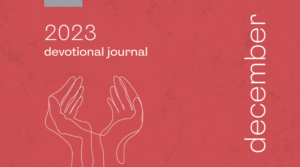Deeper ReflectionThe high point of Daniel’s vision of the four great beasts was a
“little horn” that rose out of the “ten horns” of the “dreadful and
terrifying and extremely strong” “fourth beast” (vv.7-8). The “ten
horns” of the fourth beast are “symbols of violent, aggressive power in
all directions”
40 . The little horn takes on human features, including the
ability to speak, with “a mouth uttering great boastful words” (vv.8, 11).Literary structure shapes theological message. The vision of the Ancient
of Days (vv.9-10) and the vision of the Son of Man (vv.13-14)
sandwich
the vision of the boastful little horn (vv.11-12). Daniel saw the glory of
God while at the same time hearing the little horn boasting. Here are two
realities – “the world of rampaging beasts” (vv.11-12) and “the world of
the heavenly court” (vv.9-10, 13-14) – that are “not totally separate and
independent”
41 . The two realities are “ultimately one whole integrated
reality” with two perspectives.
42 We see one reality by sight and one by
faith. But we must by faith see the total reality.The sandwich structure shows God’s total sovereign control over
arrogant powerful nations. The great boasting of these nations – or any
arrogant powerful person – will not last forever. It has an
“until”: “until
the beast was slain, and its body destroyed and given to the burning fire”
(v.11). This “until” is a divine “until”. The verbs in passive voice, “slain”,
“destroyed” and “given” point to the Divine Passive, underscoring the
sovereignty of God. We rest in God’s sovereignty and wait for the divine
“until” with perseverance and patience.
40 Christopher J. H. Wright, 153
41 Christopher J. H. Wright, 154
42 Christopher J. H. Wright, 154

